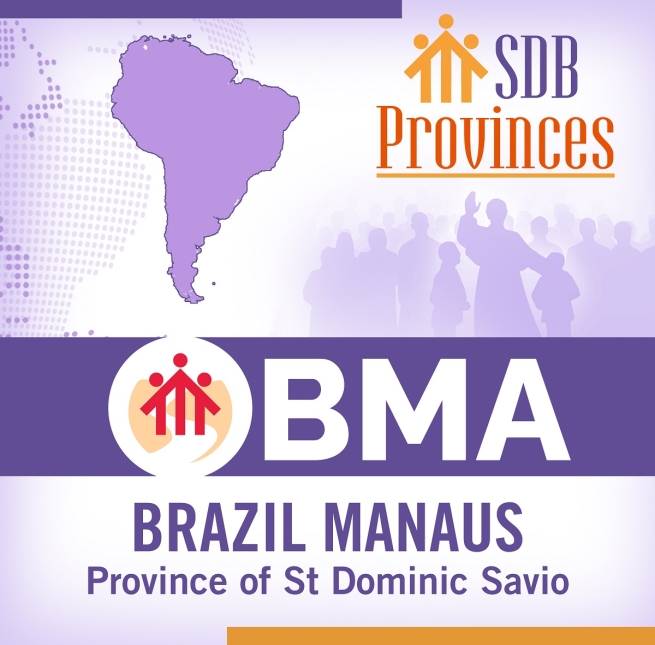A Salesian presence in Amazonia was first considered in 1908 after a journey made by Bishop Frederico Costa, Diocesan Bishop of Manaus, in the Alto Rio Negro, and formalised through a request to the Holy See. In 1910, the Apostolic Prefecture of Rio Negro was created, and in 1914 it was entrusted to the Salesians. They arrived the following year, and the first pioneers were Fr Giovanni Balzola, Salesian Brother José Canuto and Fr Giuseppe Solari. The headquarters of the new mission was São Gabriel da Cachoeira.
In 1916, Salesian Brazil was made up of two provinces: the Province of Mary Help of Christians, with headquarters in São Paulo, which included South Brazil and North Brazil; and the Province of Mato Grosso, dedicated to St Alphonsus Liguori, with headquarters in Campo Grande.
The Apostolic Prefecture of Rio Negro, entrusted by the Pope to the Salesian Congregation in 1914, was canonically linked to the São Paulo Province, although the yearbooks of the Salesian Congregation sometimes place it after the Province of Campo Grande. In reality, being a mission territory, it depended on human and material resources that were provided directly by the Salesian Congregation's centre.
In 1925 the St Aloysius Gonzaga Province was established with headquarters in Recife, and the territory of the new Province covered Manaus and the Apostolic Prefecture of Rio Negro.
In the same year, by determination of the Holy See, the Apostolic Prefecture of Amazonia, including Rio Negro, became a ‘Prelature Nullius’ and others were established such as Porto Velho, also entrusted to the Salesians. Fr Pedro Massa became the first Prelate of Rio Negro and Apostolic Administrator of the Prelature of Porto Velho.
The process of expansion of the Salesian presence in Amazonia began from that moment on: in 1926 the Taracuá mission was founded; in 1927 the Barcelos mission; in 1928 Porto Velho; in 1929 Humaitá; in 1930 Iauareté; in 1931 the ‘Nossa Senhora do Carmo’ Institute, in Belém; in 1939 the diocesan seminary at Belém was taken up; in 1940 the mission at Parí Cachoeira was founded; in 1942 the diocesan seminary of Manaus was taken up; in 1943 the missions of Santa Isabel do Rio Negro and São Carlos do Jamari were founded; in 1948 the Salesian presence began in Ananindeua, at the Casa do Filho do Seringueiro; in 1953 the missionary residence of Assunção do Rio Içana was founded; in 1955 the Salesian São Domingos Sávio Industrial School was founded in Manaus. Then, from 1956 to 1958, the Salesian presence in the Prelature of Porto Velho became dependent on the Saint John Bosco province of Rio de Janeiro.
Finally, in 1958, the Province of BMA was established. ‘The new Province, called ISMA (Salesian Missionary Province of Amazonia), covers the states of Maranhão, Pará and Amazonas and neighbouring territories. Despite the proposal to place the headquarters in Belém, it was decided that it would be in Manaus, as the geographical centre of the region. And although it was created by detachment from the mother Province, it is larger than the Province from which it was dismembered,' says the communiqué issued at the time, informing the new Provincial.
The first Superior of the new province was Fr Miguel d'Aversa, who would become Bishop of Humaitá in 1962.
Today, the Salesians in Amazonia are present in three archdioceses (Manaus, Belém and Porto Velho) and three dioceses (São Gabriel da Cachoeira, Humaitá and Ji-Paraná). These six ecclesiastical circumscriptions, although different from each other, have characteristics common to the entire Church in Amazonia, which is considered missionary due to the small number of priests.
The BMA province is currently home to 74 Salesians: 41 priests (although six work outside the province), seven coadjutors (of whom only one is in temporary vows) and 26 in formation (2 novices, 6 postnovices, 11 practical trainees, six in the theologate and one in the post-theologate). It is interesting to note the presence of indigenous vocations in a missionary province such as this: to date there are nine indigenous Salesian priests and seven Salesians in formation.
The Salesian missionary dimension in Brazil is expressed above all in the presence among the indigenous populations. ‘Indigenous missionary work is first of all a qualitative religious presence. It consists in being with the people, who have their own culture, customs and religion. It is an experience of encounter with the other and, from this, of attention and development of an evangelising action,’ explain the BMA Salesians.
The reflections of this preferential option for the indigenous peoples - as a marginalised social sector - can be seen in various spheres: at the social level, Salesian activity is very much centred on formation, on the strengthening of indigenous youth as protagonists and on support for leaders; as well as at the level of caring for the vocational culture, with the Indigenous Formation Centre, currently active in São Gabriel, which has as its objective the formation of good Christians and the revival of vocations, both lay and religious.
As for Salesian houses, there are 11 communities which run a total of 10 oratories, two schools, two social works, eight parishes, two shrines and five youth centres.
The Salesian Family is present through the contribution and the educational, missionary and apostolic commitment of the Salesian Cooperators (with 10 centres and 175 members); the Don Bosco Volunteers (with two groups and 4 members) and the Association of Mary Help of Christians (with two groups and 17 members).
 Title
Title
Title
Title
 Title
Title
Title
Title
 Title
Title
Title
Title
 Title
Title
Title
Title
 Title
Title
Title
Title
 Title
Title
Title
Title
 Title
Title
Title
Title
 Title
Title
Title
Title
 Title
Title
Title
Title
 Title
Title
Title
Title
 Title
Title
Title
Title
 Title
Title
Title
Title
 Title
Title
Title
Title
 Title
Title
Title
Title
 Title
Title
Title
Title
 Title
Title
Title
Title
 Title
Title
Title
Title
 Title
Title
Title
Title
https://www.infoans.org/en/sections/news/item/23463-rmg-sdb-provinces-the-st-dominic-savio-province-of-manaus-brazil-bma#sigProId30ca001a47


